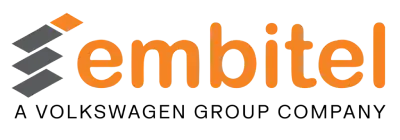Every decade brings a force that changes the way we live and work. Back then, it was electricity. Later on, it was the computer. Today, it is Artificial Intelligence (AI).
What was once hyped has now become the differentiating factor behind customer service, sales, and decision-making. According to a 2024 McKinsey survey, 72% of organisations already use at least one AI tool, which proves that this shift is not a dream for tomorrow, but a reality unfolding today.
Salesforce, a global leader in CRM, has been at the forefront of this shift with a progressive suite of AI-powered assistants: Salesforce Einstein Chatbots, Salesforce Copilot, and Salesforce Agentforce.
But with three different options available, many business leaders ask the same question: Which Salesforce Artificial Intelligence tool is right for us?

In this comprehensive guide, we will explore the features, strengths, and ideal use cases of each, helping you choose between Einstein Chatbots, Copilot, and Agentforce.
Why Salesforce AI Assistants Matter Today?
In this connected world, customers expect instant and personalised service. Teams want tools that remove repetitive tasks so that they can focus on strategy and creativity. And businesses need to scale operations quickly without increasing costs.
Salesforce AI assistants meet these needs by:
- Automating routine processes
- Providing smarter insights in real time
- Enhancing customer engagement with natural conversations
- Scaling enterprise-wide operations without heavy manual input
Whether you are looking for a simple chatbot or an advanced AI agent capable of reasoning and taking autonomous action, Salesforce has a solution.
An Overview of Salesforce AI Assistants
Salesforce offers three distinct AI assistants; each designed for different levels of complexity:
- Einstein Chatbots – best for simple customer queries and repetitive tasks.
- Salesforce Copilot – boosts productivity within Salesforce applications using generative AI.
- Salesforce Agentforce – an enterprise-level AI that reasons, plans, and acts across departments.
Let’s examine their differences in detail.
- Business Use Case: From FAQs to Enterprise Workflows
- “Where’s my order?”
- “How do I reset my password?”
- “What’s your return policy?”
- Understand your business processes
- Plan actions across departments
- Execute multi-step workflows automatically
- Task Complexity: Narrow vs Multi-Step
- Autonomy: Scripted vs Independent
- Intelligence: Scripts, Generative AI, and Reasoning
- Data Handling: Static vs Real-Time Insights
- Natural Language Processing (NLP): Keywords vs Contextual Understanding
- Learning Capability: Static vs Adaptive
- Integration: Salesforce-Only vs Ecosystem-Wide
- Customisation: Basic Bots vs Low-Code Agents
- Scalability: Small-Scale Support vs Enterprise-Wide Deployment
Salesforce Einstein Chatbots
Einstein Chatbots are ideal for customer service teams dealing with repetitive questions. They follow fixed rules and scripts, answering simple queries such as:
This reduces pressure on support agents and ensures quick responses for customers.
Salesforce Copilot
Copilot shifts the focus from external support to internal productivity. It assists employees by surfacing relevant Salesforce data, updating records, or summarising account details. Think of it as a digital assistant that lives inside Salesforce, guiding staff through everyday workflows.
Salesforce Agentforce
Agentforce goes beyond assistance. It can:
For example, if a customer cancels a subscription, Agentforce could issue a refund, notify finance, and trigger a retention workflow without human involvement.
Einstein Chatbots
Best for repetitive, well-defined tasks like FAQs, order status, or password resets. They excel in handling high-volume, rule-based queries but can’t manage multi-step or context-heavy interactions.
Copilot
Supports employees with structured, guided workflows like sales, service, or marketing tasks. It provides contextual recommendations but remains limited to predefined processes and requires human oversight.
For example, a service agent works on a case, and Copilot suggests the next steps, such as checking knowledge articles, escalating to the right team, or drafting a reply. It keeps the workflow structured and efficient.
Agentforce
Designed for enterprise-level automation, it handles complex, multi-step operations across departments. With cross-domain integrations and adaptive intelligence, it can manage dynamic tasks at scale.
A product recall requires action across logistics, compliance, and customer service. Agentforce coordinates updates, triggers workflows in multiple systems, and keeps all stakeholders informed automatically.
Einstein Chatbots
They depend on pre-defined scripts, making them effective only for predictable queries. When faced with unexpected questions, they escalate to a human agent.
For Example, when a customer asks about a custom delivery option, the bot routes the chat to support staff.
Copilot
Operates with user prompts, guiding workflows but offering little autonomy. It assists by suggesting actions, leaving final decisions to the user.
For instance, a marketer asks Copilot to draft campaign copy, but they must approve and publish it.
Agentforce
Capable of high autonomy, it makes decisions and executes actions across systems independently. This reduces manual intervention and speeds up resolution.
Example: Salesforce Agentforce detects a service outage, creates a support case, updates customers, and triggers internal fixes automatically.
Einstein Chatbots
These are powered by simple AI models that work on pattern recognition. They can match user inputs to pre-set scripts, making them ideal for predictable and repetitive queries.
Copilot
Built on Einstein GPT, it leverages generative AI to create responses, suggest actions, and assist with routine automation. It adds flexibility compared to rule-based bots but still operates within guided workflows.
Agentforce
Powered by the Atlas Reasoning Engine. It is developed for automation and handles advanced reasoning and problem-solving. It can analyse complex scenarios, make decisions, and execute actions independently across systems.
Einstein Chatbots
They work with static, pre-defined datasets, meaning their answers are only as good as the scripts and data fed to them. This restricts them from adapting to new or dynamic scenarios.
Example: A customer asks about a product that just went out of stock, but the bot still shows it as available because the dataset hasn’t been updated.
Copilot
It can access Salesforce data and provide contextual assistance, but it doesn’t adapt to real-time changes. Its insights are useful but limited to what is already stored in the system.
Example: A sales rep requests pipeline updates, and Copilot pulls the latest CRM records, but it will not be able to reflect a deal change made in another integrated system just minutes ago.
Agentforce
It integrates with multiple systems and pulls in real-time data, ensuring decisions are based on the latest information. This makes it highly reliable for dynamic, fast-moving environments.
Example: It detects a shipment delay from a logistics system, updates Salesforce records, and notifies customers instantly with accurate, real-time updates.
Einstein Chatbots
They rely on basic NLP, mainly keyword matching, which makes them effective only for simple, rule-based queries. If phrasing differs from pre-set patterns, they often fail to respond accurately.
Use case: A customer types “Track order” and the bot pulls shipment status but it may not understand “Where is my package heading now?”
Copilot
Copilot applies NLP to assist users by interpreting prompts in a limited context. It can understand intent but struggles when conversations move beyond structured workflows.
Use case: A sales rep asks, “Summarize this account’s last 5 interactions,” and Copilot provides a clear snapshot, but it won’t be able to handle a broader discussion about cross-account trends.
Agentforce
Agentforce uses advanced NLP with contextual awareness, understanding full conversation flow and reasoning across topics. This enables it to hold human-like, dynamic conversations.
Use case: A customer discusses a delayed loan approval, shifts to compliance requirements, and then asks about repayment options. Agentforce understands the flow and addresses all queries seamlessly.
Einstein Chatbots
They require manual updates whenever businesses want to improve responses or add new scenarios. This makes them more rigid and maintenance-heavy over time.
Example: A retailer must manually add a new FAQ about “same-day delivery” before the bot can answer it.
Copilot
Like Chatbots, Copilot also depends on manual fine-tuning to improve accuracy and relevance. While it can generate responses, admins need to update prompts and workflows regularly.
Example: Before some new discounting rules go live, the sales manager tweaks Copilot’s prompts to reflect the updated discounting rules.
Agentforce
Unlike the others, Salesforce Agentforce continuously learns from interactions and adapts its reasoning. Over time, it becomes smarter, reducing the need for constant manual updates.
Example: After repeatedly handling loan applications, it learns to anticipate compliance checks and streamline approvals automatically.
Einstein Chatbots
They integrate smoothly with Salesforce to handle customer interactions within the ecosystem. However, third-party integration options are minimal, limiting their versatility.
Copilot
Designed to work within Salesforce, it strengthens productivity across Sales, Service, and Marketing Cloud. Its functionality is mostly confined to Salesforce apps, offering little external connectivity.
Agentforce
Built for enterprise flexibility, it integrates not only with Salesforce but also with third-party systems and tools. This makes it ideal for orchestrating end-to-end workflows across diverse platforms.
Einstein Chatbots
They offer a simple bot-building interface that is easy to set up for basic use cases. However, customisation options are limited, restricting flexibility for complex scenarios.
Copilot
Customisation is possible through Copilot Builder, enabling teams to adapt workflows to their needs. Still, it relies on pre-set templates, which limit the scope of personalisation.
Agentforce
Equipped with Agent Builder, it provides a low-code platform where businesses can design and refine AI agents. This makes advanced automation accessible without requiring deep technical expertise.
Einstein Chatbots
They scale well for handling large volumes of customer-facing queries like FAQs or order tracking. However, they lack the depth to manage complex, multi-step processes.
Copilot
Best suited for internal teams, it boosts productivity by guiding users and automating routine tasks. Still, it is not designed to manage high-volume, customer-facing interactions.
Agentforce
Built for enterprise-wide impact, it can handle complex workflows that span multiple departments. Its ability to coordinate across systems makes it highly scalable for large organisations.
Salesforce AI Assistants in Action: Use Case Examples
- Einstein Chatbots
- Copilot
- Agentforce
A retail brand uses Salesforce Einstein Chatbots to handle repetitive customer questions about delivery timelines, returns, and store hours. This frees up human agents to focus on complex cases. The result is faster response times and improved customer satisfaction.
A sales team leverages Salesforce Copilot to generate summaries of account histories before client meetings instantly. Instead of manually piecing together notes from CRM records, reps get contextual insights in seconds. This helps them walk into meetings better prepared and more persuasive.
A financial services company deploys Salesforce Agentforce to automate end-to-end loan approvals. The system evaluates risk, checks compliance rules, and coordinates with customer service teams, all without manual intervention. This speeds up processing and delivers a seamless customer experience.
SEO Benefits of Implementing Salesforce AI
For organisations with digital-first strategies, implementing Salesforce AI assistants can also support SEO indirectly by:
- Improving customer experience and reducing bounce rates
- Enabling quicker, context-rich responses on websites
- Scaling support for higher web traffic volumes
- Enhancing productivity for content, marketing, and service teams
Final Verdict: Which Salesforce AI Assistant Should You Choose?
- Salesforce Einstein Chatbots is best if you want a low-cost, reliable solution for repetitive customer queries.
- Salesforce Copilot works if your priority is boosting employee productivity inside Salesforce applications.
- Choose Salesforce Agentforce if you need an advanced AI agent capable of reasoning, planning, and acting independently at scale.
Conclusion: The Future of AI in Salesforce
Salesforce’s suite of Artificial Intelligence applications – from Einstein Chatbots to Copilot and now Agentforce mirrors how businesses are maturing in their use of AI. The future lies in AI that not only answers questions but also thinks, reasons, and acts independently.
With Salesforce’s AI tools, organisations now have access to truly enterprise-grade AI assistants that can manage complex, multi-department processes with minimal human intervention.
At Embitel, we help businesses unlock this potential by tailoring Salesforce services to your unique needs. From setting up smart chatbots for growing businesses to enabling enterprise-wide automation with Agentforce, we ensure your Salesforce investment drives measurable outcomes. Our expertise in Salesforce integration, customisation, and managed services means you don’t just adopt AI, but you make it a seamless, value-creating part of your digital ecosystem.


